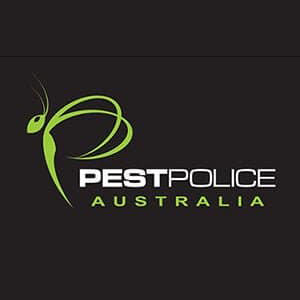With flowers blooming and the weather warming up, spring sure is a wonderful time of the year in Australia. However, spring also brings with it some unpleasant Australian spring pests.
It is true that you should keep an eye out for pests in and around your castle at all times; but it is also true that depending on the season you are in, you are more or less likely to meet certain types of pests than others.
Common home pests are very predictable animals in the eyes of qualified pest control professionals. With their help, you may recognise the early indications of spring bug invasion and put a stop to a wide host of pest-related issues before they do too much damage in your place.
Knowing what to look for allows you to prepare for difficulties, identify an issue early, and eliminate them yourself or with the help of a pest control professional.
Spring: The Awakening and Mating
During the spring season, pest activity is at its highest, particularly in Australia’s cooler regions. A large number of common household pests begin wandering out of their winter hiding places as they emerge from their winter sleep, many of which will eventually make their way into your home.
Honeybees will take advantage of the new pollen that is drifting through the air and termites will begin looking for wood to feed on. As the first rains of the season begin to fall, ants will seek shelter indoors to avoid the deluge.
Spring is also the mating season for many common pests, which assemble in large numbers in search of a partner during this time of year. Keeping a watch out for huge colonies in and around the house is essential, indeed; the sooner you notice them, the simpler it will be to eliminate them.
What are some spring pests to be on the lookout for?
1. Spiders
When the temperature rises, it’s difficult to ignore the fact that these eight-legged creatures begin to appear in your vicinity—and some of them are extremely scary like the famed redback spider.
2. Bees
Despite the fact that bees are useful for honey production, you don’t want a swarm of bees buzzing about your children while they splash around in the pool for the first time since last summer. Bees become a nuisance in the spring since they are on the lookout for pollen in your spring blooms but sadly, removing a beehive is a difficult task.
3. Termites
When those gorgeous, warm spring evenings begin to fall into place, you may see some flying termites in the area. While the small, flying insects themselves may not be the ones wreaking havoc, their progeny will do a great deal of harm once they locate something substantial to eat at your residence.In fact, they’re considered Australia’s most damaging pest, so keep an eye out for any indications of termite activity around your house, especially flying termites, which means they are on the prowl for their next structure to infest.
4. Birds
What additional pests are particularly fond of the springtime? It’s these flying critters. While birds are a wonderful species, you don’t want them to decide that your roof space or another location in your neighbourhood is the best spot to build a nest. One of the reasons is that they are capable of transmitting illnesses or destroying your garden or property.
5. Bird mites
The small bird mites that birds carry with them can be in the hundreds in a single nest. And when they are out in search of a new bird host, they can end up feeding on you. Once you become their target, they’ll bite any exposed skin.
6. Ants
Ants are eusocial insects, which means they never exist on their own. You will most likely have visitors for a lengthy period of time if you encounter one of them. Ants live in big colonies made up of thousands of worker ants and a queen ant.
They are like bees in that they labour every day to feed their colony and antlings. They need a constant food source, which you may be supplying by the way. Despite the fact that they are very beneficial to the ecosystem, ants can be a nuisance to humans.
7. Cockroaches
Cockroaches may be found all over the globe and they are among the most resilient creatures on the planet. They are among the filthiest insects on the planet as well, carrying germs with them and causing itching and severe allergies with their droppings. In order to keep them out of your home in spring, you should clean your house and keep food and waste containers covered. But as the saying goes: prevention is always preferable to cure.
8. Flies
The most unpleasant pests that infest your house throughout the spring and summer are flies and mosquitoes. Sugary meals are their favourite and they like to lay their eggs in filthy environments such as waste, decaying materials, and animal excrement.
Their reproductive activity is constant throughout the year; however, they are most active during the warmest months. Home and garden maintenance should be done on a regular basis to keep these nuisances out.
Clean up any spills that have occurred around your home and secure any food containers. Do not leave half-empty wine glasses or unclean plates on the table. If, on the other hand, they have already infiltrated your premises, getting rid of them is not as difficult as it is with other pests, thankfully. Flyscreens may be used on your windows and doors to keep these insects out.
9. Mosquitoes
Mosquito eggs are one of the things that you should be concerned about since they hatch in the early spring. Their bites are obnoxious, itchy, and painful; and they are known to spread illnesses like malaria, dengue fever, and yellow fever to humans.
They may mature from the egg stage to the adult stage in as little as ten days. Adult mosquitoes are attracted to sources of standing water in your yard, such as buckets, containers, pots, and bowls, where they may deposit their eggs.
Look around your home for any sources of standing water that may have accumulated and drain these sources. Maintain the shortness of your lawn grasses since lengthy grasses give protection for these pests.
What measures can be taken to keep these pests at bay?
Depending on the kind of pest you are dealing with, you may need to use different approaches. You should generally follow the measures outlined below to repel and control these pests.
- You must ensure that your house and yard are clean and orderly before you begin. You should, more importantly, determine whether or not these pests have already infiltrated your home.
- Check to see if any of the fly screens are damaged.
- Check your garden for long grass and shrubs on a regular basis.
- Check to see whether the doors and windows are securely sealed. Look for any standing water around your home, too.
- Check for leaks in the pipes.
- Check for spider webs in the corners and on the ceilings.
- Check for evidence of bug droppings or eggs, which may indicate a bigger problem.
- Preventive measures include the following:
- Make certain that all of the home’s entrances are adequately sealed.
- Do a thorough cleaning of your home.
- Fix the fly screens if they are broken.
- Repair cracks and fissures on the walls.
- Empty trash cans on a regular basis.
- Keep the grass properly trimmed.
- Water that has accumulated in container gardens should be removed.
- Never leave pet food outdoors.
In the event that all these measures fail, the best course of action is to choose pest control treatments that are appropriate for the infestation. Take into account the stage of the invasion so you can appropriately pick any of these weapons:
- Repellents
- Sprays that are low in toxicity
- Insecticides
In the end, your best bet is to consult professional pest exterminators. They know the best strategy to employ in engaging with pests that are going frenzy right after they’ve just roused from their winter slumbers. Plus, they know the pesticides to use that have zero impact on the environment—a crucial choice when you wish to keep the pests out without harming the helpful and friendly critters that come to your yard come springtime.
Conclusion
As a word of advice, it is best to use the least amount of chemical possible in handling spring pests since harsh chemicals are not only harmful to your children and pets, but wreak havoc on the environment. For the most part, homes that are free of pests are indeed happy homes.
In the end, being in a space that is pest-free allows you to take advantage of the sunshine, long days, barbecues, and quality time with your family during spring. There will be no more weird odour emanating from a hidden cadaver, no more buzzing bugs on top of your wine glass, and no more itchy mozzie bites to be worried about.
Concerned about spring pests spoiling the arrival of the much-awaited, sunshiney days? Time for a pest control check! On that note, it’s a good idea to have pest control professionals come to your house and do a thorough pest inspection— call us at Pest Police and we’ll make you look forward to a pest-free spring!

